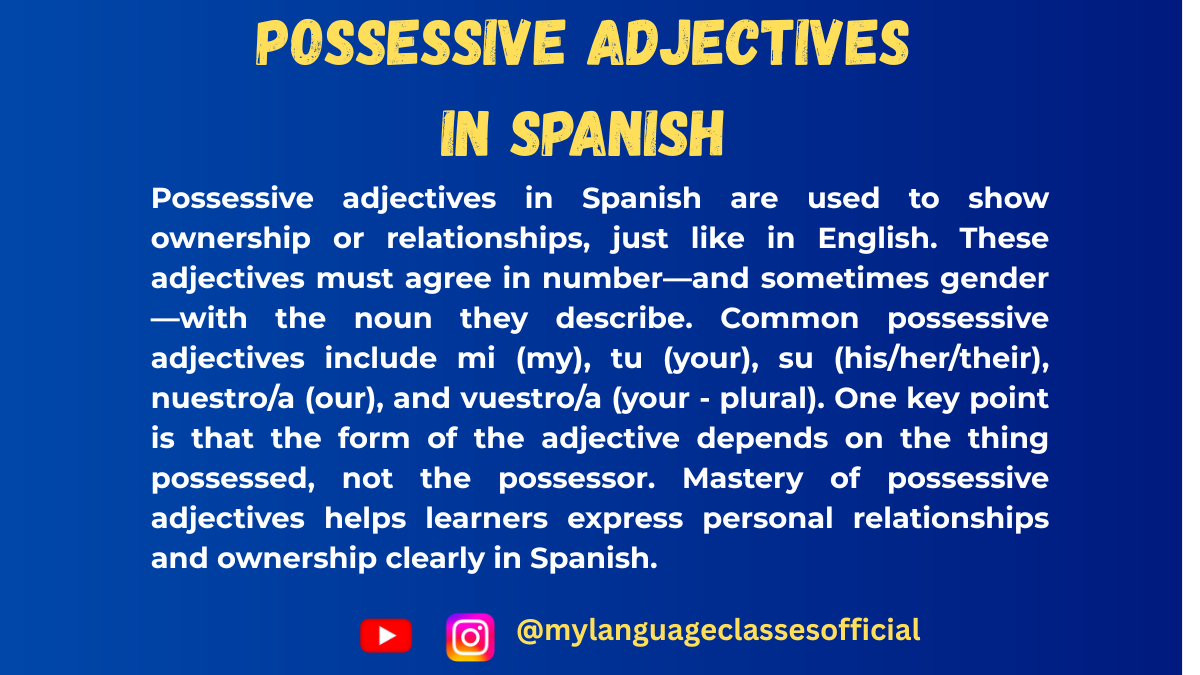Your cart is currently empty!
Tag: ENGLISH
-

How to Learn a Language Fast: Tips That Work
How to Learn a New Language Fast: Proven Tips and Strategies
Learning a new language can be an exciting yet challenging journey. Whether you’re aiming to boost your career, travel with ease, or connect with new cultures, mastering a language quickly requires the right strategies and mindset. The good news? You don’t have to spend years in a classroom to achieve fluency. With the right approach, dedication, and tools, you can accelerate your learning and start speaking a new language in record time.
In this guide, we’ll explore proven techniques, expert advice, and practical strategies that will help you learn a new language fast. From immersion methods to leveraging technology, these tips will set you on the path to success.
1. Set Clear Goals and Stay Motivated
Define Your Objectives
Before diving into language learning, ask yourself:
- Why do I want to learn this language?
- What level of proficiency do I need?
- How much time can I dedicate daily?
Setting SMART goals (Specific, Measurable, Achievable, Relevant, and Time-bound) will keep you focused and motivated.
Stay Inspired
- Follow social media pages of native speakers.
- Watch inspiring success stories of polyglots.
- Reward yourself for achieving milestones.
2. Immerse Yourself in the Language
Surround Yourself With the Language
- Change your phone and social media language settings.
- Listen to music, podcasts, and audiobooks in your target language.
- Watch movies and TV shows with subtitles first, then without them.
Engage With Native Speakers
- Join language exchange groups or find a language partner.
- Travel to a country where the language is spoken.
- Use platforms like iTalki, HelloTalk, or Tandem to connect with native speakers.
3. Leverage Technology and Language Apps
Best Language Learning Apps
- Duolingo: Gamifies learning and helps build vocabulary.
- Anki: Uses spaced repetition for effective memorization.
- Babbel: Offers practical conversation-based lessons.
- Pimsleur: Focuses on audio-based learning for pronunciation and comprehension.
Use AI and Speech Recognition Tools
- Google Translate for quick translations.
- Speech recognition apps to refine pronunciation.
- Chatbots for practice in real-time conversations.
4. Practice Speaking From Day One
Overcome Fear of Speaking
- Start with simple phrases and gradually build complexity.
- Talk to yourself in the mirror or record yourself speaking.
- Join online forums or discussion groups to practice writing and speaking.
Find a Speaking Buddy
Practicing with a friend or tutor enhances confidence and fluency. Use:
- Meetup.com to find local language groups.
- Online communities on Reddit, Discord, or Facebook.
5. Master Vocabulary Efficiently
Use the 80/20 Rule (Pareto Principle)
Focus on the most commonly used words in everyday conversations. Studies show that learning the top 1,000 words in a language can help you understand 80% of daily conversations.
Flashcards and Memory Tricks
- Use Mnemonics to associate words with images or stories.
- Try Spaced Repetition Systems (SRS) for long-term retention.
- Write new words in a language journal with contextual examples.
6. Improve Listening and Pronunciation Skills
Active Listening Techniques
- Listen to language podcasts and repeat sentences aloud.
- Watch interviews and mimic native speakers’ pronunciation and intonation.
- Try the shadowing technique: Listen to a phrase and repeat it simultaneously.
Tune Your Ear to Different Accents
Expose yourself to various accents by consuming diverse content from different regions where the language is spoken.
7. Learn Grammar Naturally
Focus on Practical Grammar First
Instead of memorizing rules, learn grammar through:
- Sentence patterns and contextual usage.
- Reading simple books, blogs, and news articles.
- Observing patterns in native speakers’ speech.
Avoid Perfectionism
Make mistakes, learn from them, and keep moving forward. Fluency comes from practical use, not perfection.
8. Overcome Common Challenges
Struggling With Motivation?
- Set short-term achievable goals (e.g., mastering 10 new words daily).
- Join online language challenges to stay engaged.
- Remind yourself of your “why” for learning the language.
Forgetting What You Learn?
- Use spaced repetition to reinforce memory.
- Revise old vocabulary and phrases regularly.
- Practice writing daily journals or social media posts in the target language.
Feeling Stuck at an Intermediate Level?
- Engage in deep conversations instead of small talk.
- Read books and watch documentaries on topics of interest.
- Start thinking in the target language to build fluency naturally.
Conclusion
Learning a new language fast requires dedication, the right strategies, and a mindset focused on consistent improvement. By setting clear goals, immersing yourself in the language, leveraging technology, and practicing daily, you can achieve fluency faster than you think.
Ready to Start Your Language Journey?
If you enjoyed this blog, be sure to check out more posts like this on my blog at My Language Classes. Don’t forget to subscribe my YouTube channel and follow me on Instagram for the latest language learning tips and lessons. Leave a comment below to share your thoughts, or ask any questions you have about nouns.
Happy learning! 😊
-

From Struggle to Joy: How I Learned a Language
How I Stopped Struggling and Started Enjoying Learning a New Language
A few years ago, I decided to learn Spanish. At first, it was exciting—I downloaded all the apps, made flashcards, and watched YouTube videos. But after a few months, I hit a wall. I could understand some words, but forming sentences felt impossible. I’d freeze up when trying to speak, afraid of making mistakes. It was frustrating, and I almost gave up.
Then, something changed. I realized I was approaching language learning the wrong way. Instead of treating it like a school subject, I started making it a natural part of my life.
Here’s what helped me:
I stopped aiming for perfection. I accepted that mistakes are part of the process. Kids don’t learn languages by studying grammar first—they learn by trying, failing, and trying again.
I found content I genuinely enjoyed. I started watching Spanish TV shows with subtitles, listening to music, and even following Spanish-speaking influencers. Learning became fun instead of a chore.
I practiced speaking early, even if I felt silly. I talked to myself, narrated my daily routine, and joined online language exchanges. My Spanish wasn’t great at first, but I slowly got better just by using it.
I focused on phrases, not just words. Instead of memorizing random vocabulary, I learned useful sentences and expressions that I could actually use in conversations.
I made it part of my daily routine. Even if it was just 10 minutes a day, consistency made a huge difference. Little by little, it all added up.
Now, I’m not fluent (yet!), but I can hold conversations, express myself, and—most importantly—I enjoy the process.
If you’re struggling to learn a language, don’t be too hard on yourself. Keep going, have fun with it, and remember: you don’t have to be perfect to communicate. Just start speaking, and the rest will follow.
What’s been your biggest challenge in learning a new language ?
If you enjoyed this blog, be sure to check out more posts like this on my blog at My Language Classes. Don’t forget to subscribe my YouTube channel and follow me on Instagram for the latest language learning tips and lessons. Leave a comment below to share your thoughts, or ask any questions you have about nouns.
Happy learning! 😊
-

Possessive Adjectives in Spanish
Mastering Possessive Adjectives in Spanish
¡Hola, amigos! If you’re diving into the beautiful world of Spanish, understanding possessive adjectives is a must. These small but powerful words allow you to express ownership and connection, and they’re used all the time in daily conversation. As an expert Spanish teacher and YouTuber, I’m here to break them down for you in a way that’s easy to understand. Let’s get started!
What Are Possessive Adjectives?
Possessive adjectives in Spanish are words that indicate to whom something belongs. Unlike English, Spanish possessive adjectives agree in gender and number with the noun they describe. Here are the main ones you’ll need to know:
Singular Possession Plural Possession mi (my) mis (my) tu (your, informal) tus (your, informal) su (his, her, its, your, formal) sus (his, her, its, your, formal) nuestro/a (our) nuestros/as (our) vuestro/a (your, informal Spain) vuestros/as (your, informal Spain) su (their, your, formal) sus (their, your, formal)
Key Characteristics of Possessive Adjectives
- Agree with the Noun, Not the Owner
In Spanish, possessive adjectives match the gender and number of the noun they describe, not the person who owns the object. For example:- Mi libro (My book) → Mis libros (My books)
- Nuestro coche (Our car) → Nuestra casa (Our house)
- Informal vs. Formal “Your”
- Use tu/tus for informal situations (talking to friends, family, etc.).
- Use su/sus for formal situations (talking to strangers, superiors, etc.).
- “Vuestro” is Only Used in Spain
If you’re in Spain, you’ll hear vuestro/vuestra/vuestros/vuestras for “your” in informal plural situations. In Latin America, people stick to su/sus for both formal and informal plural forms.
Examples in Everyday Context
1. Mi/Mis
- Mi casa es tu casa. (My house is your house.)
- Mis amigos son increíbles. (My friends are amazing.)
2. Tu/Tus
- ¿Dónde está tu teléfono? (Where is your phone?)
- Tus ideas son brillantes. (Your ideas are brilliant.)
3. Su/Sus
- Su coche es rápido. (His/her/your car is fast.)
- Sus libros están en la mesa. (His/her/your books are on the table.)
4. Nuestro/Nuestra/Nuestros/Nuestras
- Nuestro perro es muy lindo. (Our dog is very cute.)
- Nuestras familias están cenando juntas. (Our families are having dinner together.)
5. Vuestro/Vuestra/Vuestros/Vuestras
- ¿Es vuestro jardín? (Is this your garden?) [Used in Spain]
- Vuestras mochilas están aquí. (Your backpacks are here.) [Used in Spain]
Common Mistakes and How to Avoid Them
- Forgetting Gender Agreement
Beginners often forget to match the possessive adjective to the noun’s gender. Remember:- Nuestra for feminine singular (nuestra casa).
- Nuestro for masculine singular (nuestro coche).
- Mixing Formal and Informal “You”
- Don’t confuse tu (your) with tú (you).
- Example: Tu libro está aquí, tú lo olvidaste. (Your book is here; you forgot it.)
- Using the Wrong Plural Form
Always use the plural form of the possessive when describing multiple items:- Correct: Mis zapatos están en la entrada. (My shoes are at the entrance.)
- Incorrect: Mi zapatos están en la entrada.
Tips for Mastering Possessive Adjectives
- Practice with Real-Life Contexts
Try labeling items around your home. For example: mi teléfono, tu lámpara, su silla. - Listen and Repeat
Watch Spanish YouTube videos or listen to podcasts. Pay attention to how native speakers use these adjectives in context. - Interactive Exercises
Create sentences with different possessive adjectives and have a friend or teacher check them. For example:- Mi madre cocina muy bien. (My mother cooks very well.)
- ¿Dónde están tus llaves? (Where are your keys?)
- Create a Song or Mnemonic
Memorizing can be fun! Make a short song with the possessive adjectives or a catchy rhyme.
Final Thoughts
Mastering mi, tu, su, nuestro, vuestro is an important step in your Spanish-learning journey. With consistent practice and exposure, you’ll use them naturally in no time. ¡Buena suerte y sigue practicando! (Good luck and keep practicing!)
If you found this guide helpful, I’d love to hear from you! Share your thoughts in the comments below or connect with me on social media. For more tips, resources, and inspiration, visit my blog at mylanguageclasses.in. Follow on Instagram and subscribe on YouTube
📚 Continue Learning Spanish
- Agree with the Noun, Not the Owner
